#fulgoromorpha
Explore tagged Tumblr posts
Text

hello my dears... pale white planthopper nymph today... maintained very still for my photos


i dont have much to say here because its hard to ID planthoppers to species when theyre still in their nymph form and have barely developed their shapes and colours. this one is from the family Issidae.
pure white eyes. cutely shaped. tinge of brown. stayed still and hopped away when i was done
#photography#macro#nature#bugs#arthropods#entomology#insects#bugblr#macro photography#planthoppers#true bugs#hoppers#hemiptera#fulgoromorpha#lazchance
914 notes
·
View notes
Text

another fabulous planthopper from Costa Rica, Biolleyana costalis. juveniles are colorful, with a plume of shiny blue wax filaments on their tails.
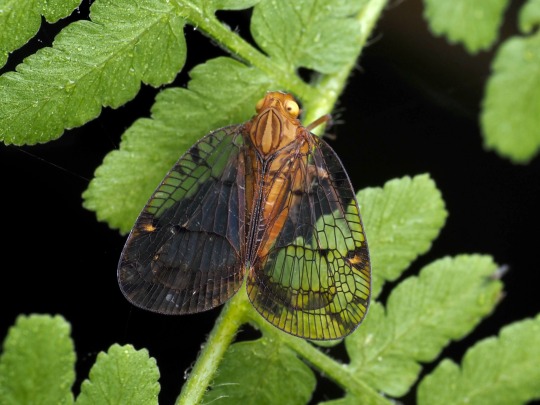
later in life they will adopt a different, more modest color scheme in exchange for elaborately veined wings. a hint of the old self remains—a tiny orange crescent on each forewing matching the markings on juveniles’ wing buds.
1K notes
·
View notes
Text

529 notes
·
View notes
Text

a Siphanta acuta planthopper wasting its camouflage by conspicuously leaning against an oak bud. it might be feeding, but i don't think i see these guys on oaks very often. their preferred host plants seem to be Acacia, which suits me fine, since they're horribly invasive
(October 29th, 2024)
#my pics#bugs#entomology#insects#true bugs#planthoppers#hemiptera#fulgoromorpha#flatidae#siphanta#bugblr
45 notes
·
View notes
Video
Apache degeeri
208 notes
·
View notes
Text

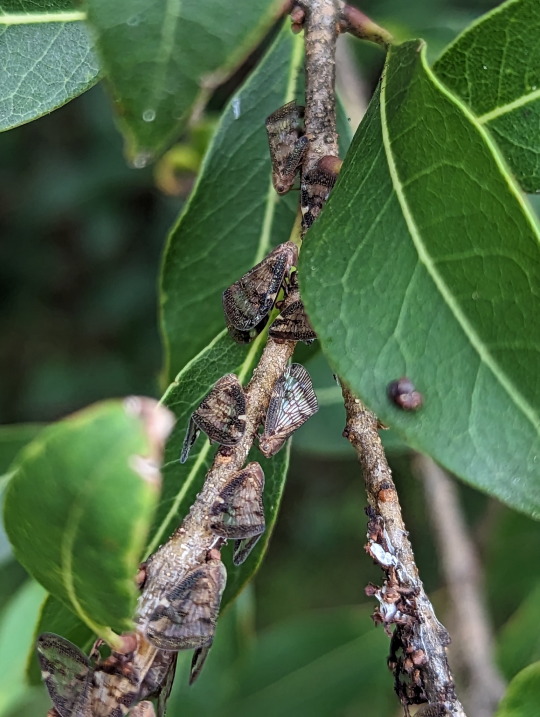
Passionvine Hopper
Scolypopa australis
24/03/23 - NSW, Dapto
#invertebrates#invertblr#Arthropods#Arthropoda#bugs tw#insects#insect#insecta#insectblr#insects tw#bugs#bugblr#bug#entomology#Passionvine Hopper#Scolypopa australis#Hemiptera#Auchenorrhyncha#True Hoppers#Fulgoromorpha#Planthoppers
145 notes
·
View notes
Text

a Squathopper with some amazing eyespots, mimicking those of a jumping spider.
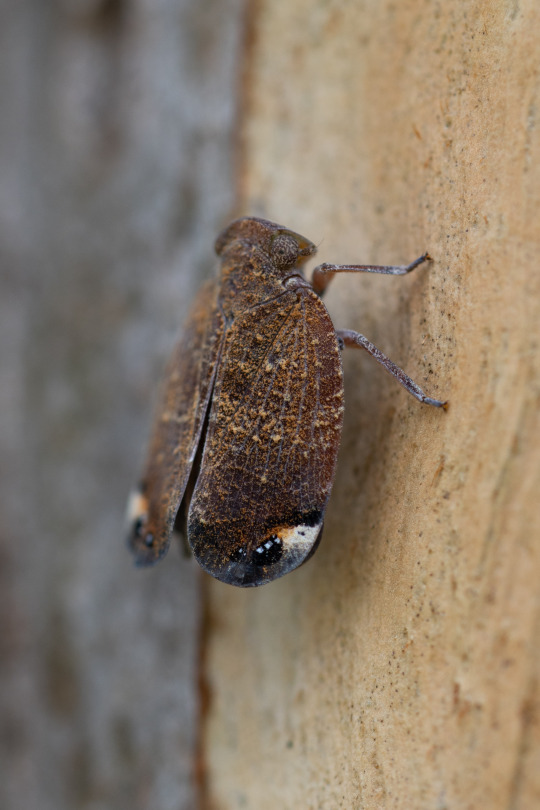
Unknown Squathopper (genus Platybrachys, likely P. vidua).
#ljsbugblog#bugblr#entomology#macro#insects#hemiptera#true bugs#fulgoromorpha#plant hoppers#eurybrachidae#squathoppers#platybrachys#unconfirmed id
40 notes
·
View notes
Text

[PHOTO TAKEN: JUNE 9TH, 2023 | Image ID: A photo of a black, red, and orange planthopper on the green stem of a small plant /End ID.]
#Fulgoromorpha#Planthopper#Planthoppers#Hemiptera#insect#insects#bug#bugs#true bugs#true bug#Bugblr#entomology#arthropods#invertebrate#photos#photo#Wasp House Sights
4 notes
·
View notes
Text

Do you have a favorite planthopper? Cause I sure do, and it's the ghostly Acanalonia conica, or the Green Cone-Headed Planthopper. These little guys are the planthoppers I encounter most frequently around my yard. They range from almost imperceptible green to this ephemeral pale mint and I'd smooch every single one if they weren't so teeny. Voted "Most Likely to be the Planthopper Found in Random Ass Cobwebs Everywhere."
1 note
·
View note
Photo



Ant-mimic piglet bug, Formiscurra indicus, Caliscelidae, Fulgoromorpha (planthoppers)
Found in southern India
Photos 1-2 by chinmay_c_m and 3 by itsamantis
682 notes
·
View notes
Text
in order of images
Pyrops candelaria (Litchi Lanternbug),
Pyrops heringi,
(blue) Lycorma meliae (formerly classified as Lycorma olivacia),
Penthicodes astraea (possibly color shifted?),
Pyrops watanabei,
Saiva gemmata,
repeated image of Pyrops watanabei,
Aphaena aurantia
all of these insects are planthoppers (infraorder Fulgoromorpha) in the family fulgoridae. members of the pyrops, lycorma, and fulgora genus are often called lanternflies/lanternbugs; the name can be found used for other genuses as well, it's quite loose. ETA: seeing lanternfly hate makes me sad. :( none of these guys are invasive to the US. concentrate your energy on memorizing the Spotted Lanternfly, all these guys are hanging out where they belong.
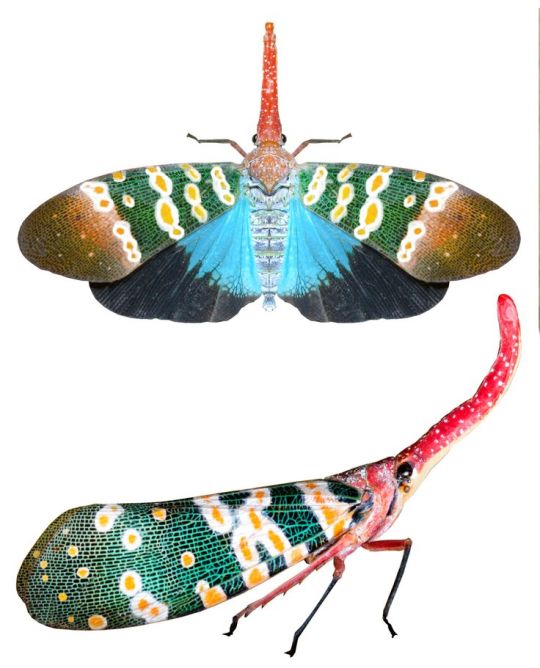

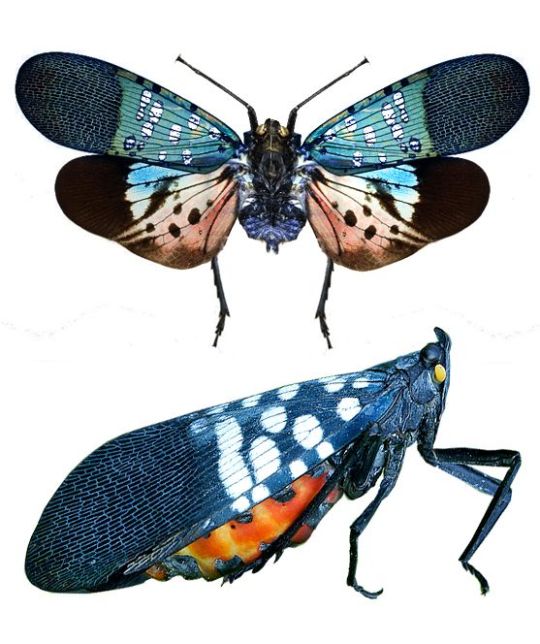
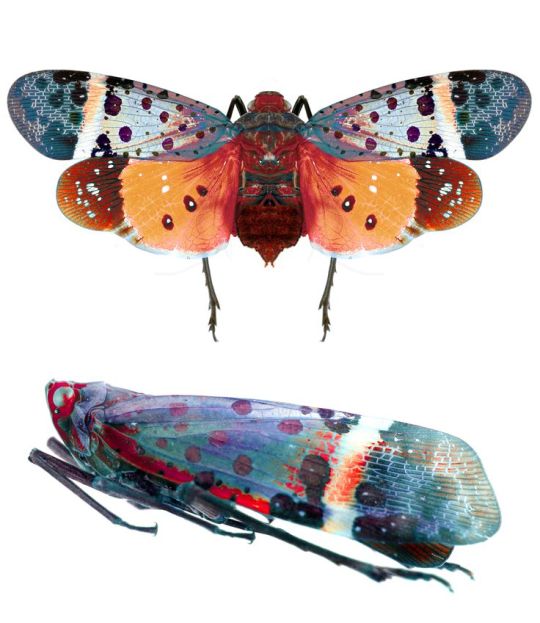
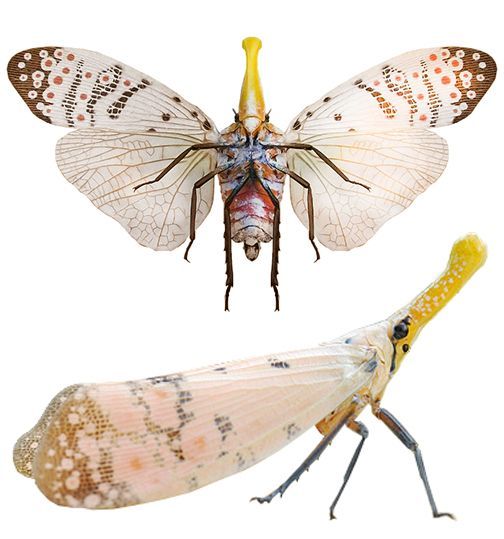
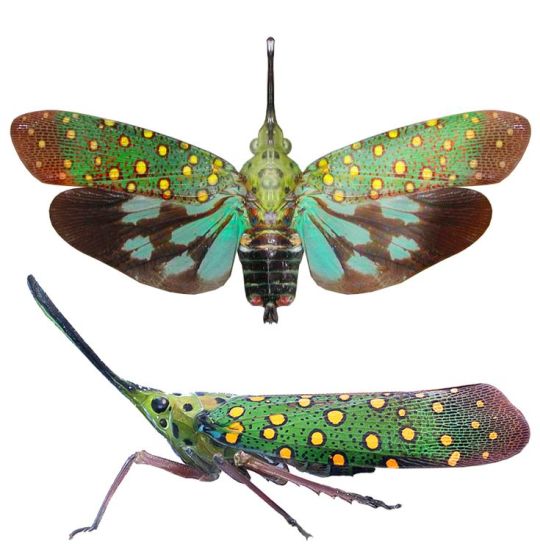

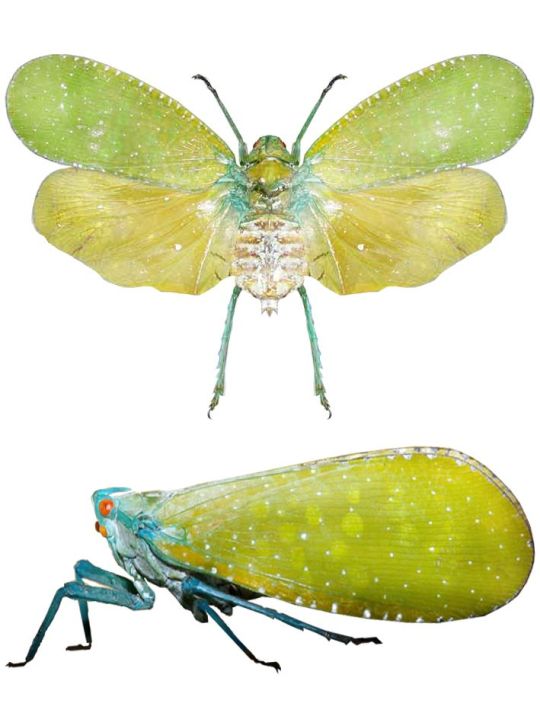
#considering op ripped these images from pinterest where their names were listed#they could have included them. but yknow. at least i got to look at cool bug pics identifying these guys!#my favorite is lycorma meliae#they come in several colors depending on their current stage of life!#insects#lanternfly#bugs#look up galleries of these guys on inaturalist do it now#beepery
7K notes
·
View notes
Text
Quand les blattes remplacent les fourmis dans la trophobiose : un nouveau modèle de comportement vital majeur chez des familles d'hémiptères (cicadelles, fulgores...) a été découvert grâce à une sy...
See on Scoop.it - EntomoNews
The mutualistic interspecific relationships of trophobiosis between trophobiont planthoppers (Hemiptera, Fulgoromorpha) providing food to the host called xenobiont, are reviewed.
When Cockroaches Replace Ants in Trophobiosis: A New Major Life-Trait Pattern of Hemiptera Planthoppers Behaviour Disclosed When Synthesizing Photographic Data
Diversity, 01.03.2023
Thierry Bourgoin, Ilia Gjonov, Albena Lapeva-Gjonova, Sonia Roger, Jérôme Constant, Gernot Kunz et Michael R. Wilson
[Image] Graphical Abstract
-------
NDÉ
Traduction
Les relations mutualistes interspécifiques de trophobiose entre les trophobiontes (Hemiptera, Fulgoromorpha) fournissant de la nourriture à l'hôte appelé xénobiont, sont passées en revue. Le degré de relations interspécifiques entre ces symbiotes varie d'occasionnel ou de courte durée (quelques heures à quelques jours) à des relations plus longues, avec des trophobiontes laissés libres de s'échapper (type optobiotique) par le xénobionte, ou maintenus enfermés dans des nids ou des abris de fourmis (type cryptobiotique). Sur 267 cas collectés, 126 sont de nouvelles observations illustrées. La trophobiose occasionnelle est documentée dans 13 familles de cicadelles et semble être assez générale chez Fulgoromorpha, bien qu'elle soit signalée pour la première fois chez Dictyopharidae, Eurybrachidae, et Nogodinidae.
Les xénobiontes associés aux cicadelles sont signalés chez les fourmis et d'autres hyménoptères, lépidoptères et blattodea, mais aussi chez les mollusques et même chez de petits vertébrés gekkonides. Les Tettigometridae semblent être exclusivement entretenus par les fourmis, tandis que les Fulgoridae sont beaucoup plus souvent entretenus par les blattes (40 %) que par les fourmis (27 %).
La trophobiose à long terme se produit toujours avec les fourmis, les cryptobiotiques étant signalés chez les Cixiidae, Delphacidae, Tettigometridae, Meenoplidae, Flatidae et Hypochthonellidae, tandis que les optobiotiques restent limités aux tettigometrides. De nouvelles observations étho-écologiques sur 92 espèces de tettigometrides actuellement décrites permettent de mettre l'accent sur les Tettigometridae fréquentés par les fourmis.
32 espèces différentes (35%) sont désormais connues pour être fréquentées par les fourmis. En Bulgarie, où quatorze espèces sont présentes, la trophobiose se produit avec au moins cinq espèces d'entre elles (36%). Chez les tettigometrides, la sous-socialité, la sessilité et la vie souterraine semblent être des facteurs clés permettant des relations plus complexes avec les fourmis. Cependant, la taille de la cicadelle et donc la quantité de nourriture (gouttes de miellat) est probablement aussi un facteur important. Cela pourrait expliquer de nombreuses nouvelles observations de fulgoridés de grande taille et souvent isolés avec des blattes.
Le tapotement des ailes antérieures des trophobiontes par les blattes, les papillons de nuit, ou du substrat de l'écorce par les geckos a été observé, mais les comportements de palpation antennaire par les fourmis sont les plus fréquemment observés chez les tettigometrides, bien que ce ne soit pas le cas chez les plus grandes espèces. Chez les tettigometrides, des sécrétions spécifiques des glandes tégumentaires (allomones) des pleurites de l'abdomen pourraient également jouer un rôle dans leurs associations mutualistes à long terme, voire même compléter l'action des kairomones du miellat dans la trophobiose des sauterelles en général.
Mots clés :
trophobiose ; comportement ; fourmis ; blattes ; cicadelles ; Tettigometridae ; Fulgoridae
0 notes
Text

Siphanta acuta adults look like budding leaves and late instar nymphs are the same shade of green despite lacking the wings that make them look like a walking triangle. younger nymphs like this one on the other hand are a much more conspicuous white and pink for some reason, and the only thing they're good at blending in with is their own waxy ass
(September 15th, 2024)
32 notes
·
View notes
Text
Genome comparison reveals inversions and alternative evolutionary history of nutritional endosymbionts in planthoppers (Hemiptera: Fulgoromorpha)
Published 1st July 2023
A study characterizing the genomes of Vidania and Sulcia from three Pyrops planthoppers to understand their metabolic functions and evolutionary histories.
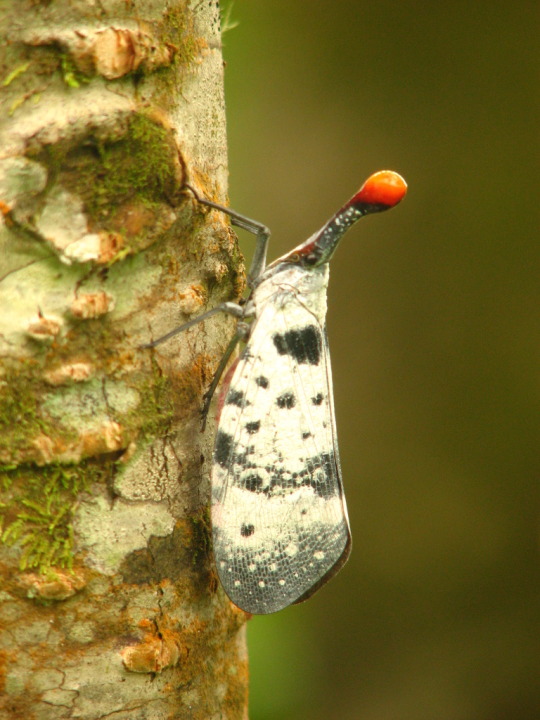
Pyrops Clavatus, from
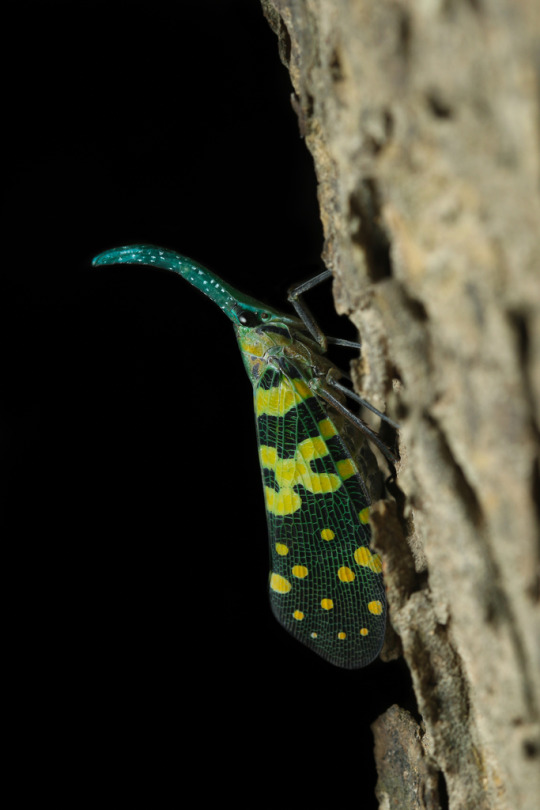
Pyrops Viridirostris, from

Pyrops Lathburii, from

The visual representation of endosymbiont diversity based on short-read assembly.
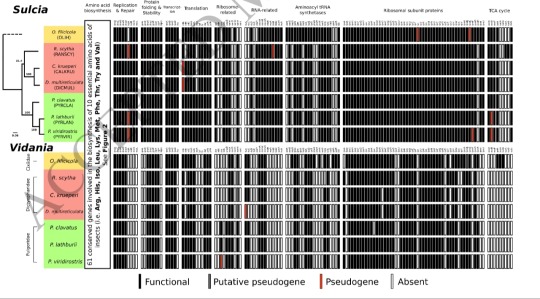
The comparison of gene set between Sulcia and Vidania lineages from seven planthopper species representing three families.
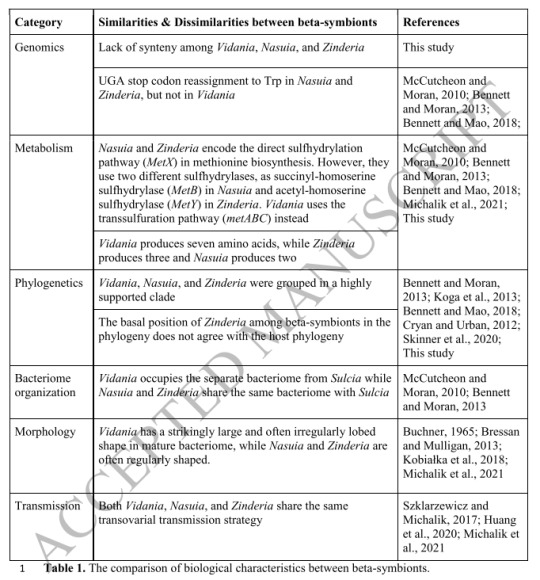
Read the paper to find out the what this evidence suggests and for extra context. itvis free!
Source:
0 notes
Text




Flatid Planthoppers I Found
Unidentified, family Flatidae
20/03/23
#Flatidae#Flatid Planthoppers#Hemiptera#Auchenorrhyncha#True Hoppers#Fulgoromorpha#invertblr#invertebrates#Arthropods#Arthropoda#bugs#bugblr#bugs tw#insects#insects tw#insecta#insectblr#entomology
88 notes
·
View notes
